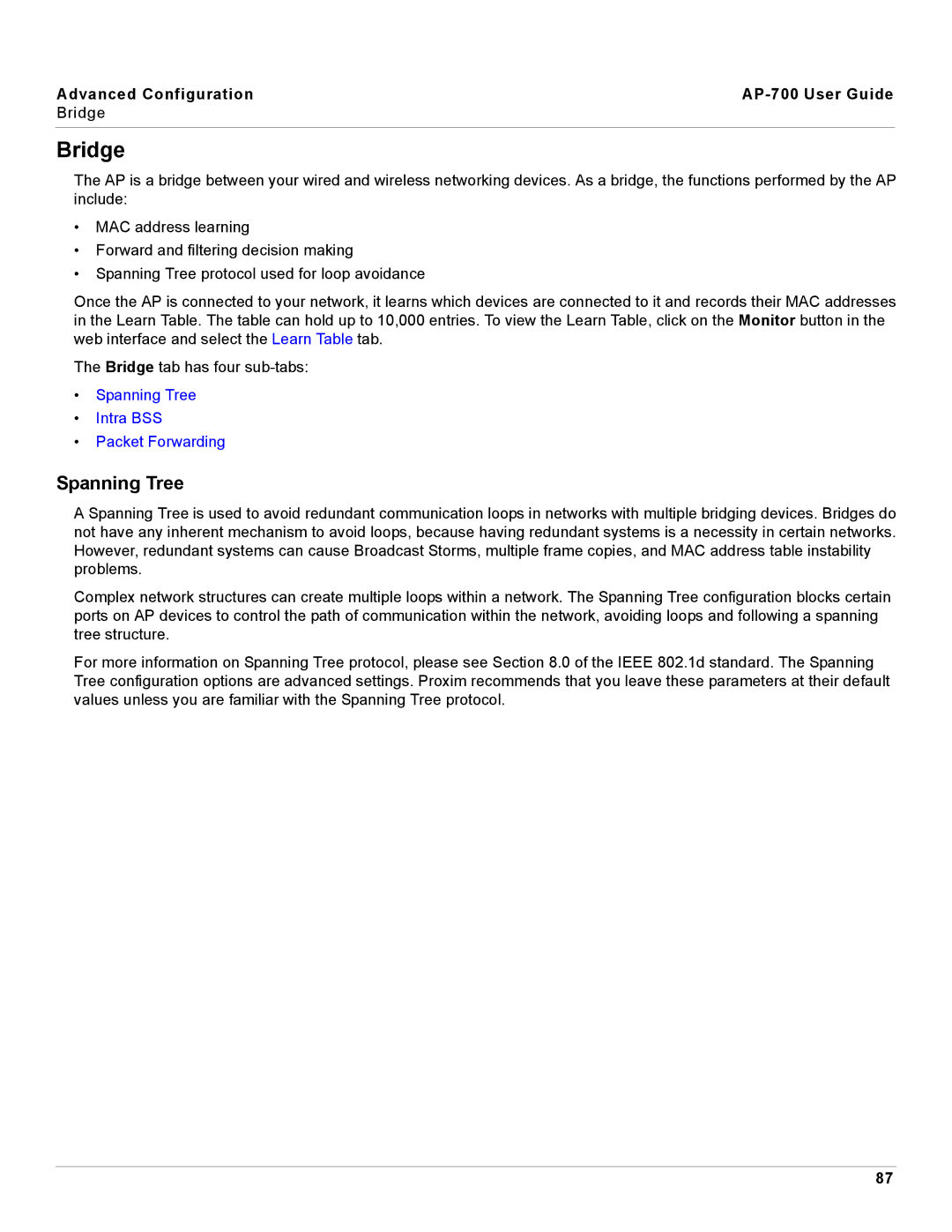
Advanced Configuration |
|
Bridge
Bridge
The AP is a bridge between your wired and wireless networking devices. As a bridge, the functions performed by the AP include:
•MAC address learning
•Forward and filtering decision making
•Spanning Tree protocol used for loop avoidance
Once the AP is connected to your network, it learns which devices are connected to it and records their MAC addresses in the Learn Table. The table can hold up to 10,000 entries. To view the Learn Table, click on the Monitor button in the web interface and select the Learn Table tab.
The Bridge tab has four
•Spanning Tree
•Intra BSS
•Packet Forwarding
Spanning Tree
A Spanning Tree is used to avoid redundant communication loops in networks with multiple bridging devices. Bridges do not have any inherent mechanism to avoid loops, because having redundant systems is a necessity in certain networks. However, redundant systems can cause Broadcast Storms, multiple frame copies, and MAC address table instability problems.
Complex network structures can create multiple loops within a network. The Spanning Tree configuration blocks certain ports on AP devices to control the path of communication within the network, avoiding loops and following a spanning tree structure.
For more information on Spanning Tree protocol, please see Section 8.0 of the IEEE 802.1d standard. The Spanning Tree configuration options are advanced settings. Proxim recommends that you leave these parameters at their default values unless you are familiar with the Spanning Tree protocol.
87
